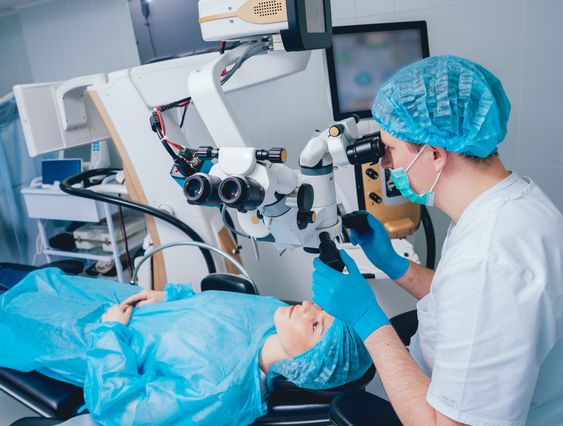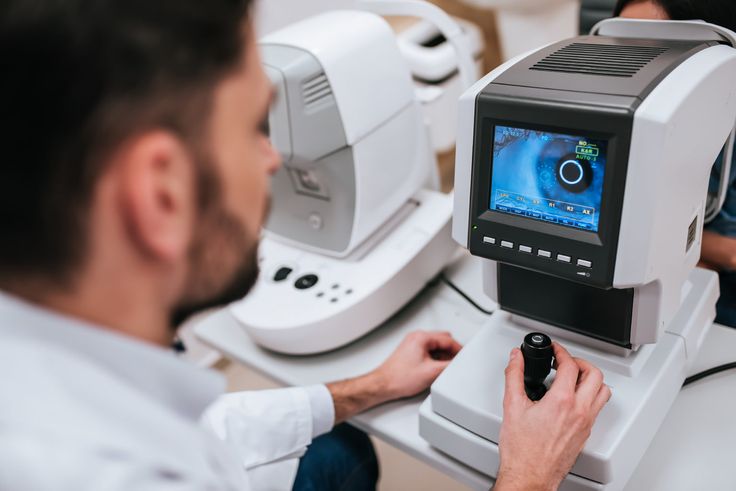Advanced Technologies In Eye Care: A Look Into The Future
The field of eye care has undergone significant advancements in recent years, propelled by cutting-edge technologies that promise to revolutionize the way we understand, diagnose, and treat vision-related issues. From diagnostic tools to surgical interventions, the integration of advanced technologies is paving the way for more accurate assessments, personalized treatments, and improved patient outcomes. In this article, we will explore some of the groundbreaking technologies shaping the future of eye care and the potential impact they hold for individuals seeking to maintain or enhance their vision.
Ocular Imaging and Diagnostics
One of the most transformative areas in eye care is the development of advanced imaging technologies that allow for detailed examinations of the eye’s structures. Optical coherence tomography (OCT) is a prime example. It provides high-resolution, cross-sectional images of the retina, enabling early detection and monitoring of conditions such as glaucoma, macular degeneration, and diabetic retinopathy. As these technologies continue to evolve, they offer unprecedented insights into the intricate layers of the eye, facilitating more precise diagnoses and tailored treatment plans.
Artificial Intelligence in Diagnostics
The integration of artificial intelligence (AI) in eye care diagnostics is heralding a new era of efficiency and accuracy. AI algorithms can analyze vast amounts of data from diagnostic imaging, identifying subtle changes indicative of various eye conditions. This not only expedites the diagnostic process but also enhances the sensitivity and specificity of assessments. AI-powered systems are particularly valuable in detecting early signs of diseases, enabling timely interventions to prevent vision loss.
Personalized Medicine in Ophthalmology
Advancements in genetic testing and molecular diagnostics are paving the way for personalized medicine in ophthalmology. Understanding the genetic underpinnings of certain eye conditions allows for targeted therapies and precision medicine approaches. This holds great promise for individuals with hereditary eye disorders, as treatment plans can be customized based on their unique genetic makeup, optimizing the chances of successful outcomes.
Gene Therapies for Inherited Eye Diseases
The advent of gene therapies represents a groundbreaking frontier in the treatment of inherited eye diseases. Conditions like retinitis pigmentosa and Leber congenital amaurosis, which were once considered incurable, now have experimental gene therapies showing promising results. These therapies aim to correct or replace faulty genes, offering hope for individuals with genetic eye disorders to regain or preserve their vision.
Advanced Laser Technologies
Laser technologies have long played a crucial role in eye care, from laser eye surgery for vision correction to the management of conditions like glaucoma. The future promises even more sophisticated laser applications. Femtosecond lasers, for example, are being utilized in cataract surgery to enhance precision and reduce recovery times. Additionally, advancements in laser therapy for retinal conditions are expanding treatment options and improving outcomes for patients.
Smart Contact Lenses and Wearable Devices
The integration of technology into everyday eyewear is on the rise, with smart contact lenses and wearable devices designed to monitor and manage various aspects of eye health. Smart contact lenses can measure glucose levels in tears for diabetic patients and monitor intraocular pressure in individuals with glaucoma. Wearable devices equipped with sensors and connectivity provide real-time data on eye movements, helping researchers and clinicians better understand visual behavior and detect early signs of neurological conditions.
Virtual Reality (VR) in Vision Therapy
Virtual reality has found its way into vision therapy, offering immersive and interactive experiences to aid in the rehabilitation of visual disorders. VR-based exercises can be tailored to address specific vision challenges, such as amblyopia (lazy eye) or difficulties with eye coordination. The engaging nature of virtual reality makes vision therapy more enjoyable for patients, potentially improving adherence to treatment regimens.
3D Printing for Customized Prosthetics and Implants
The use of 3D printing technology has extended to the creation of customized prosthetics and implants for eye care. This includes personalized corneal implants for individuals with irregular corneal shapes and customized orbital implants for patients requiring reconstructive surgery. 3D printing allows for precise tailoring of implants to match the patient’s anatomy, improving both the aesthetic and functional outcomes of the procedures.
Neurostimulation for Vision Enhancement
Neurostimulation techniques are being explored for their potential to enhance vision in individuals with certain visual impairments. Electrical stimulation of the visual cortex or optic nerve has shown promise in restoring partial vision in individuals with conditions like retinitis pigmentosa. As these technologies evolve, they hold the potential to provide meaningful improvements in the quality of life for those living with visual challenges.
Teleophthalmology for Remote Eye Care
The integration of teleophthalmology brings eye care services to remote or underserved areas, overcoming geographical barriers and increasing accessibility. Through virtual consultations, patients can receive timely assessments, follow-up care, and even participate in screenings for various eye conditions. Teleophthalmology holds particular significance for individuals in rural or distant regions who may face challenges in accessing traditional eye care services.
Conclusion
The future of eye care is undoubtedly shaped by an exciting array of advanced technologies, each contributing to a more comprehensive, precise, and patient-centric approach. From early diagnostics powered by artificial intelligence to personalized gene therapies and innovative surgical interventions, these advancements hold the promise of preserving and enhancing vision in ways previously unimaginable.
As these technologies continue to evolve, it is crucial for healthcare professionals, researchers, and policymakers to collaborate in ensuring their ethical, safe, and equitable integration into mainstream eye care practices. By embracing these cutting-edge innovations, the field of eye care is poised to enter a new era, providing individuals with a clearer vision of a future where visual health is optimized through the marvels of technological progress.




